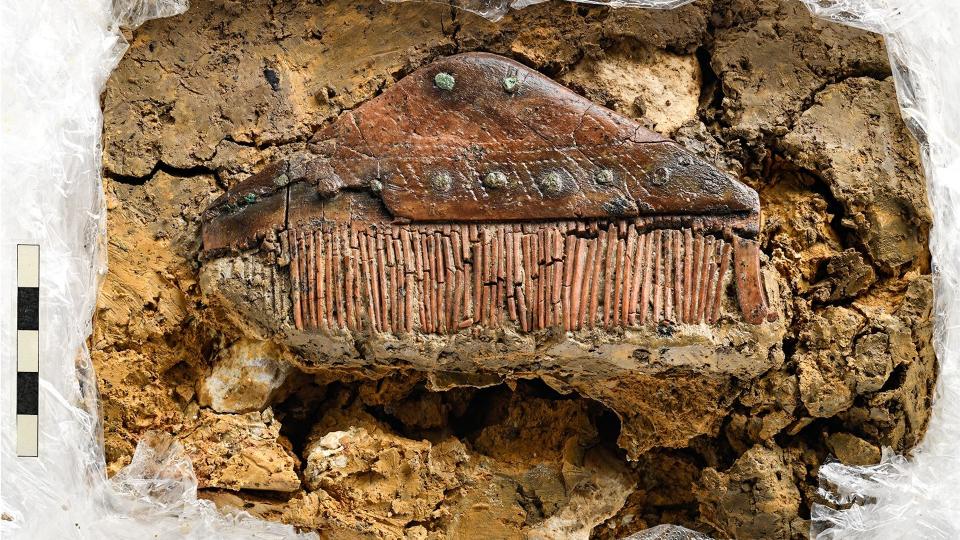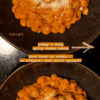When you buy through links on our articles, Future and its syndication partners may earn a commission.

Archaeologists in Germany have discovered the 1,700-year-old burial of a “barbarian” who lived on the edge of the Roman Empire and was given valuable grave goods, including glassware, pottery and a fine-tooth comb.
The grave, which is thought to date to the first half of the fourth century, holds the remains of a man who died at around age 60. It was found in May during excavations ahead of the construction of new homes in the center of the village of Gerstetten, about 40 miles (64 kilometers) east of the city of Stuttgart in southwest Germany, according to a translated statement from the Stuttgart Regional Council.
The grave was elaborately built and enclosed by a wooden chamber, and it was situated in a solitary but prominent location, the statement said.
Related: Attila the Hun raided Rome due to starvation, not bloodlust, study suggests
Among the grave goods, one glass beaker was of particularly high quality and may have been obtained from the nearby Roman fort at Guntia, now Günzburg, while distinctive features of the other burial objects suggested they were from further north, in the Elbe-Saale region of what’s now central Germany.

Barbarian Germania
The northern limit of the Roman Empire in this region — known as the “Upper Germanic Limes” — ran just to the north of Gerstetten; beyond it were the lands known as “Magna Germania” or Greater Germania, where the Germanic tribes lived.
The Roman Limes was heavily guarded by legionaries stationed at forts along the frontier, such as the fort at Guntia, but Germanic ways of life — and Germanic burials — were practiced outside the forts.
The Romans called the Germanics “barbarians” — a Greek word, originally meaning “people who speak differently,” that they applied to non-Roman people outside their territories. After the fifth century, Germanic barbarians — led by the Visigoths and Vandals — invaded the Roman lands to the south and precipitated the empire’s fall.



Restoration work
The man buried at Gerstetten was likely one of the Alemanni, a federation of Germanic tribes whose people lived near the Upper Rhine Valley, according to the statement. Alemanni graves from this time are rare in the region, the statement said. They were usually found in groups of between five and 12 individuals, and archaeologists think two more graves could yet be found in an adjacent area.
RELATED STORIES
—Pottery, swords and jewelry: Rich Stone Age and early medieval graves found in Germany
—Germanic lord buried with a harem of 6? Not quite, but the real story is fascinating.
—1,700-year-old Roman fort discovered in Germany was built to keep out barbarians
The artifacts from the Germanic grave at Gerstetten have been taken to a restoration workshop in the nearby town of Esslingen.
The human bones are still at the site so they can be documented by the archaeologists, but one of the dead man’s ribs has already been sampled for radiocarbon dating at a laboratory in the city of Mannheim. The results show the man was buried between A.D. 263 and 342, according to the statement.
EMEA Tribune is not involved in this news article, it is taken from our partners and or from the News Agencies. Copyright and Credit go to the News Agencies, email news@emeatribune.com Follow our WhatsApp verified Channel





